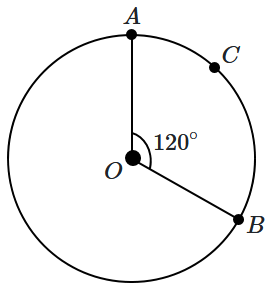Select Chapter Topics:
The position-time graph for a particle is parabolic (as shown in the figure).

Choose the corresponding \((v\text-t)\) graph.
1.

2.

3.

4.





Subtopic: Graphs |
82%
From NCERT
JEE
Please attempt this question first.
Hints
Please attempt this question first.
A car travels \(4\) km distance with a speed of \(3\) km/hr and next \(4\) km with a speed of \(5\) km/hr. What is the average speed of the car?
1. \({{15}\over{2}}\) km/hr
2. \({{15}\over{4}}\) km/hr
3. \(15\) km/hr
4. \(10\) km/hr
1. \({{15}\over{2}}\) km/hr
2. \({{15}\over{4}}\) km/hr
3. \(15\) km/hr
4. \(10\) km/hr
Subtopic: Average Speed & Average Velocity |
89%
From NCERT
JEE
Please attempt this question first.
Hints
Please attempt this question first.
A car moving on a straight-line travels in same direction half of the distance with uniform velocity \(v_1\) and other half of the distance with uniform velocity \(v_2\) . The average velocity of the car is equal to:
1. \(\frac{2v_1v_2}{v_1+v_2}\)
2. \(\frac{v_1+v_2}{2}\)
3. \(v_1+v_2\)
4. \(\sqrt{v_1+v_2}\)
1. \(\frac{2v_1v_2}{v_1+v_2}\)
2. \(\frac{v_1+v_2}{2}\)
3. \(v_1+v_2\)
4. \(\sqrt{v_1+v_2}\)
Subtopic: Average Speed & Average Velocity |
92%
From NCERT
JEE
Please attempt this question first.
Hints
Please attempt this question first.
Two identical trains cross each other moving on parallel tracks, opposite in direction. Speed of one of the train is 70 km/hr and second train has a speed of 110 km/hr. If it takes 8 seconds for two trains to cross each other then length of trains is equal to
1. 100 m
2. 200 m
3. 300 m
4. 400 m
1. 100 m
2. 200 m
3. 300 m
4. 400 m
Subtopic: Relative Motion in One Dimension |
59%
From NCERT
JEE
Please attempt this question first.
Hints
Please attempt this question first.
The position \(x\) of a particle moving along the \(x\text-\)axis varies with time \(t\) according to the equation: \(x=2.5t^2.\) What is the speed of the particle at \(t=5\) s?
| 1. | \(5\) m/s | 2. | \(10\) m/s |
| 3. | \(25\) m/s | 4. | \(50\) m/s |
Subtopic: Instantaneous Speed & Instantaneous Velocity |
87%
From NCERT
Please attempt this question first.
Hints
Please attempt this question first.
An object begins to move along the positive \(x\text-\)direction with an initial speed of \(10~\text{m/s}\) and a constant acceleration of \(2~\text{m/s}^2.\) How much time will it take to reach a speed of \(60~\text{m/s}\)?
| 1. | \(25\) s | 2. | \(20\) s |
| 3. | \(30\) s | 4. | \(15\) s |
Subtopic: Uniformly Accelerated Motion |
87%
From NCERT
Please attempt this question first.
Hints
Please attempt this question first.
If position of particle is changing with time as r = t2 – 2t (m). Find the velocity at t = 2 second
1. 2 m/s
2. 3 m/s
3. 0 m/s
4. 4 m/s
1. 2 m/s
2. 3 m/s
3. 0 m/s
4. 4 m/s
Subtopic: Instantaneous Speed & Instantaneous Velocity |
92%
From NCERT
JEE
Please attempt this question first.
Hints
Please attempt this question first.
A particle moves from \(A\) to \(B\) via \(C\) with uniform speed of \(\pi\) m/s. The average velocity during the journey is:


| 1. | \(\sqrt{3}\) m/s | 2. | \(\dfrac{\sqrt{3}}{2}\) m/s |
| 3. | \(\dfrac{3\sqrt{3}}{2}\) m/s | 4. | \(2\) m/s |
Subtopic: Average Speed & Average Velocity |
60%
From NCERT
JEE
Please attempt this question first.
Hints
Please attempt this question first.
Given below are two statements:
| Statement I: | We can get displacement from the acceleration-time graph. |
| Statement II: | We can get acceleration from the velocity-time graph. |
| 1. | Both Statement I and Statement II are correct. |
| 2. | Both Statement I and Statement II are incorrect. |
| 3. | Statement I is correct and Statement II is incorrect. |
| 4. | Statement I is incorrect and Statement II is correct. |
Subtopic: Acceleration |
70%
From NCERT
Please attempt this question first.
Hints
Please attempt this question first.
The graph shows the position-time \((x\text-t)\) relation for two students, \(\mathrm{A}\) and \(\mathrm{B}\) from school to their home.

Choose the correct entries:

| a. | \(\mathrm{A}\) is faster than \(\mathrm{B}\) |
| b. | \(\mathrm{B}\) is faster than \(\mathrm{A}\) |
| c. | \(\mathrm{B}\) lives further away than \(\mathrm{A}\) |
| d. | \(\mathrm{A}\) live further away than \(\mathrm{B}\) |
Choose the correct entries:
| 1. | (a), (d) |
| 2. | (b), (c) |
| 3. | (b), (d) |
| 4. | (a), (c) |
Subtopic: Graphs |
77%
From NCERT
JEE
Please attempt this question first.
Hints
Please attempt this question first.




